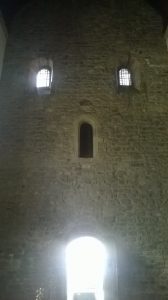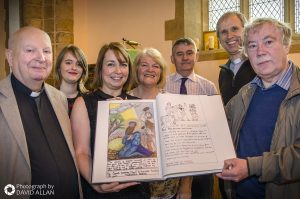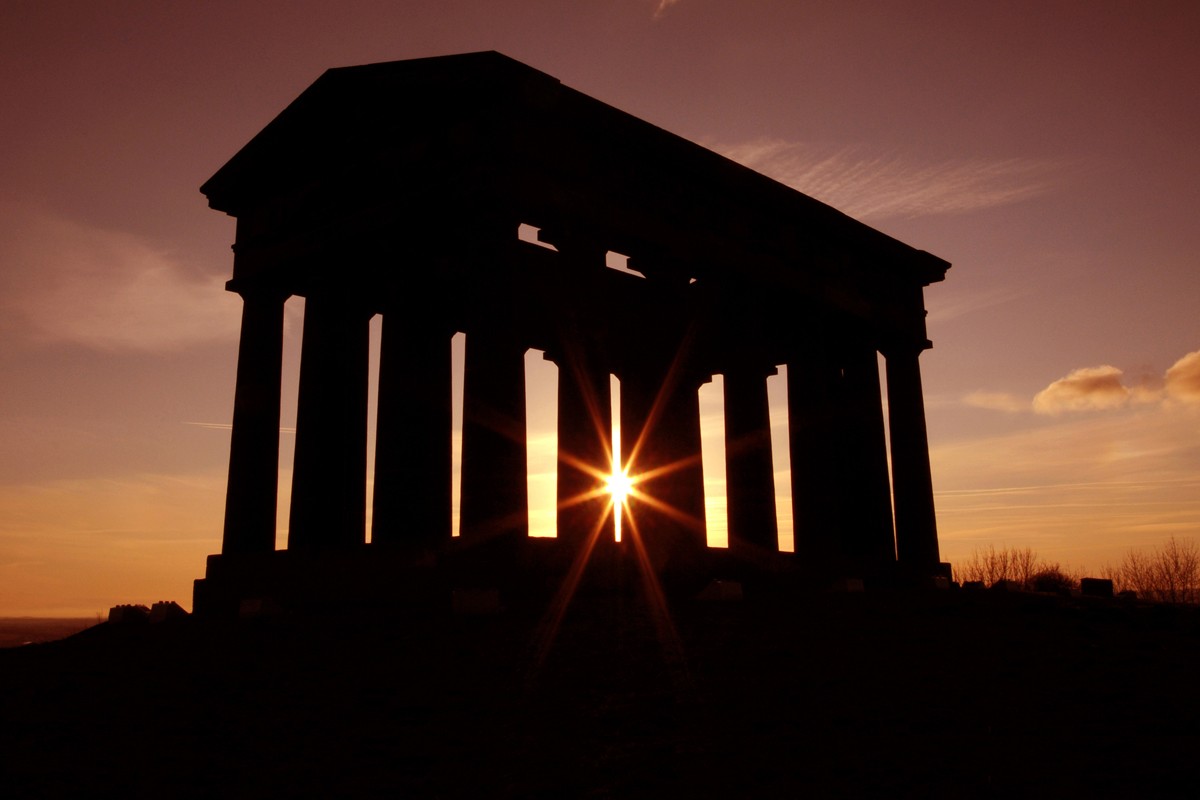Hi, my name is Maria Barnes and I am so excited about our city being considered for City of Culture 2021. I am Sunderland born and bred and I am passionate about what our City has to offer. We have an amazing theatre that hosts West End Shows and the National Glass Centre to highlight Sunderland’ s glass heritage dating back to the 7th Century. We have Penshaw Monument, which when you spot on the horizon you know you are nearly home. We have a beautiful coastline that hosts an annual Air Show and the Sunderland Illuminations which is framed by a  recently renovated Victorian Pier.
recently renovated Victorian Pier.
I am a tour guide within one of Sunderland’ s oldest buildings, dating back to 674AD – St Peter’s Church, the Wearmouth monastery. It was built in stone and glass by Benedict Biscop and the stone masons and glass makers he brought over from France. The Venerable Bede entered into St Peter’s at the age of seven and went onto be one of the world’s greatest educators.
We have visitors both locally and from all over the world and who come to see the history within the walls of St Peter’s. Our West Wall dating from 674 has seen many changes over the years from the small fishing town to the industrial revolution and our City as it stands today.
The site has a monastic footprint outside that shows the site of the original monastery, and has won awards for its unique interpretation of the Anglo Saxon monastery’s foundations.
The site was excavated by Professor Rosemary Cramp in the sixties and seventies, and on a recent visit, she recounted a tale; not about the dig, but about the spirit and warmth of the people of Sunderland.
On the day they made the first large dig Rosemary was warned that local schoolchildren would sabotage the dig and cause disruption. At 3.30 the schools emptied and a gang of local children were curious and asked “What are you doing Mrs?” Rosemary explained the importance of the dig and how they were looking for Anglo Saxon foundations and noted that a young boy ran from the scene. The young boy Charlie returned that night and every night with a stick informing Rosemary, “don’t worry Mrs we will guard your dig”. Charlie and his friends did guard the hole and the dig was a success.
We have an educational team at St Peter’s, of which I am proud to be a member, and schools visit and engage in activities that link to the school curriculum. They dress as monks, look at a day in the life of a monk, and visit our community garden to see the fruit and vegetables as well as the onsite beehive. We have a timeline that spans over 1
300 years of Sunderland’s history, so it’s history specific to their home town.
Last year over 200 schools helped us to produce a modern day version of The Codex Amiatinus – a bible that left Wearmouth 1300 years ago. In 716 it was created by the monks of Wearmouth/Jarrow for Rome, and then in 2016 it was recreated by children of Sunderland and Jarrow and was presented to the Archbishop of Canterbury and then the Pope. The project was the idea of the educational group here at St Peter’s and with help from Sunderland City Council and St Paul’s at Jarrow was a great success.
The original Codex Amiatinus is housed in Florence and 1300 years later is the oldest single volume Latin bible in existence and was created by monks in Sunderland – made in Sunderland built to last!
With the Tall Ships coming in 2018 and the City’s potential for winning 2021 it’s our time to shine 2021 – bring it on!
— Maria Barnes




